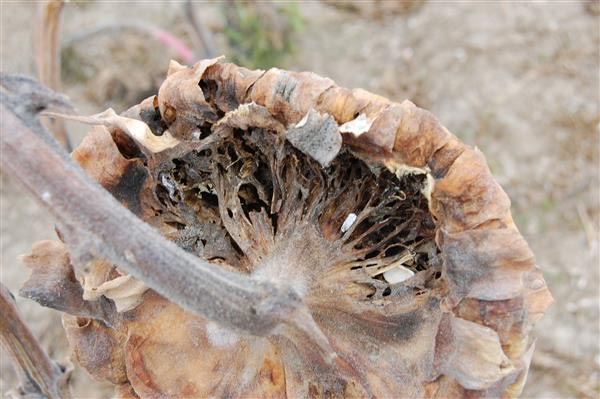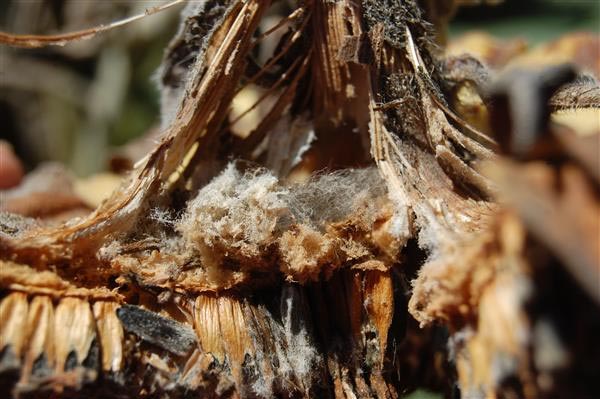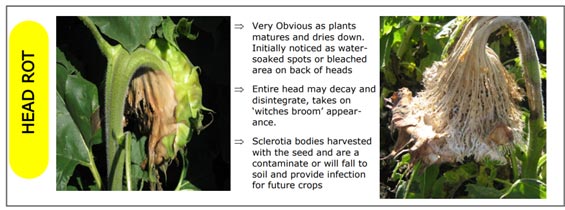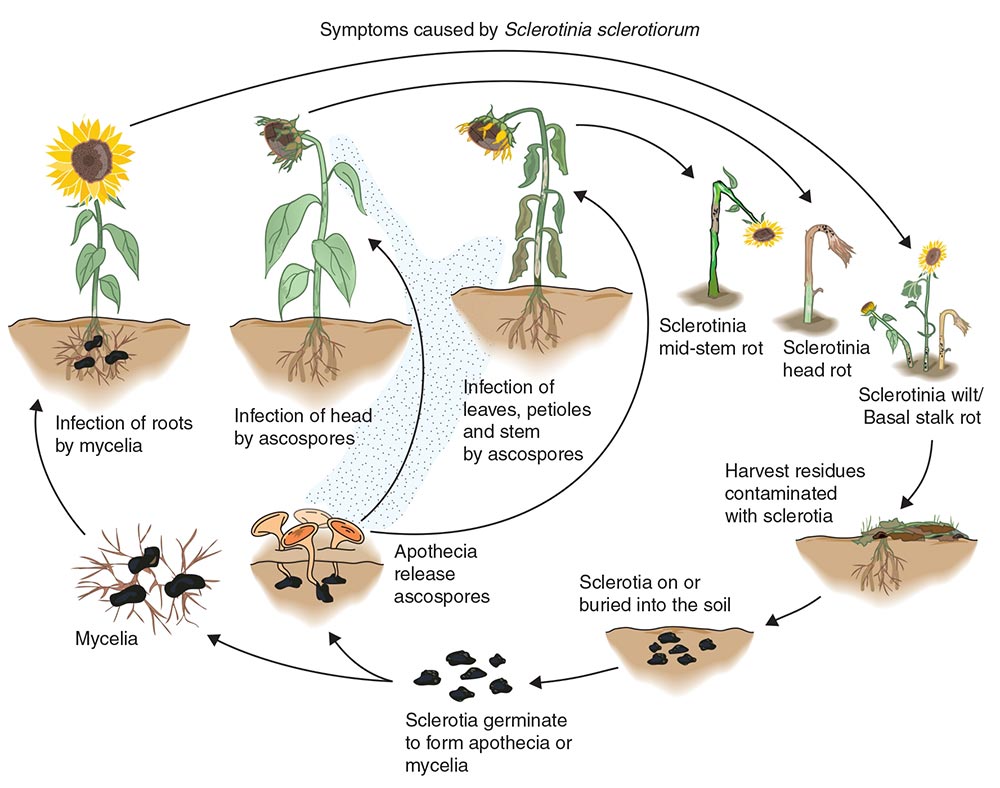Head Rot Identification in Sunflowers & Harvest Management

Rhizopus Head Rot
Rhizopus rarely occurs in Manitoba and is more of a southerly disease, however it is possible to see it here after severe storms and hail, followed by very high heat. Identifying factors that separate Rhizopus from other head rots are gray mycelia with very small black structures.
Rhizopus begins as a typical “water-soaked” dark spot on the back of a sunflower head that grows into a larger watery, soft rot and then dries and turns darker brown. Eventually, heads dry down, though this occurs prematurely in comparison to healthy plants, and infected tissue shreds, exposing gray threadlike strands of mycelial growth.
Key points:
- Enters head via wound caused by hail, most commonly
- Water-soaked lesion on backs of sunflower head
- Gray mycelial growth inside the diseased head, which can later present itself on the face of the sunflower head
- Tiny black spots, about the size of a pinhead
- 100% yield loss potential due to dropped heads
Figure 1: Dry and skeletonized head (Bob Harveson, University of Nebraska)
Figure 2: Coarse, dirty white to gray, threadlike fungal growth of Rhizopus spp. in sunflower head (Bob Harveson, University of Nebraska)
Sclerotinia Head Rot
Sclerotinia is very common in Manitoba and in several grain crops, which makes crop rotation the best management practice for this prevalent disease. A recommendation for sunflowers is to only include it in rotation when other sclerotinia host crops have not been grown on that field for 4-7 years. Chemical control is used frequently, however due to the small window for application, coverage is difficult to rely on.
Sclerotinia presence can first be found in the field by identifying cup-shaped apothecia growing on the soil surface, which produce ascospores. Symptoms in the field include the typical tan-coloured lesions on the back of sunflower heads that may be soft to the touch. As the infection spreads, the head becomes pliable and easily torn open to reveal black sclerotia bodies amongst white mycelia. Fronts of sunflower heads may have white mycelial growth, or mould, visible between the seeds. Eventually, heads will likely shred and disintegrate leaving frayed vascular elements that appear broom-like.
Key points:
- Cup-shaped apothecia on the soil
- Water-soaked lesions on backs of sunflower head
- Black sclerotia bodies inside sunflower head following disease progression
- White mycelial growth between and on seeds
- Shredding sunflower head, resembling a straw broom
Figure 3: Sclerotinia Head Rot on Sunflower
Figure 4: Sclerotinia Head Rot Symptoms in Sunflower
Figure 5: Sclerotinia Disease Cycle, American Phytopathological Society
HARVEST MANAGEMENT IN DISEASED SUNFLOWERS
Yield loss from sclerotinia head rot in sunflowers is a result of empty seeds, rather than poor quality. In fact, it is not uncommon to find large sclerotia bodies being harvested along with seed and degrading quality in that manner.
Due to the overall degradation of disease plants, not just from sclerotinia, it is a good practice to harvest infected fields first. The diseased areas should dry down more rapidly than healthy plants and standability isn’t reliable, whether that is a result of a stalk rot or head rot. The physical breaking of stalks or dropping of heads leads directly to yield loss due to the inability to pick up the grain with a header.
Article written by Morgan Cott, Agronomy Extension Specialist – Special Crops with Manitoba Crop Alliance





